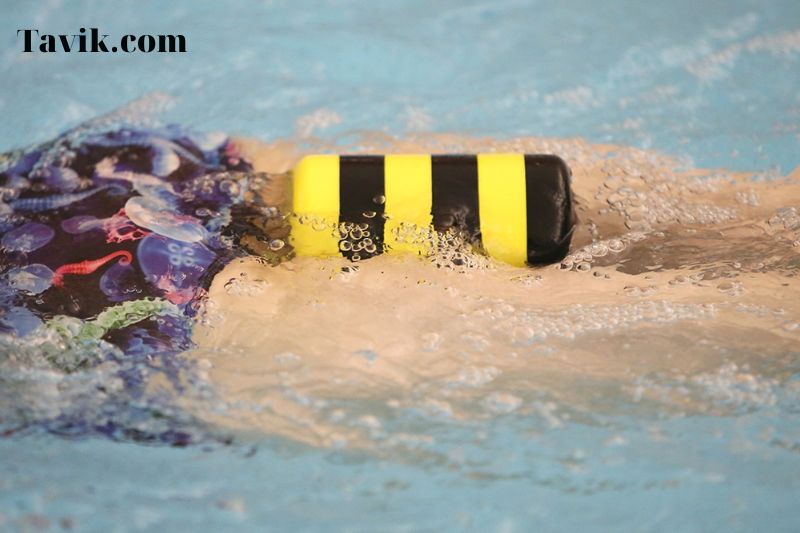There are many things to be aware of when swimming, including the possibility of getting sunburned, getting dehydrated, or swallowing too much water. However, there are also some dangers that are less well-known. Here are 17 bad things about swimming that you should be aware of.
17 Disadvantages And Risks of Swimming (Stay Informed!)
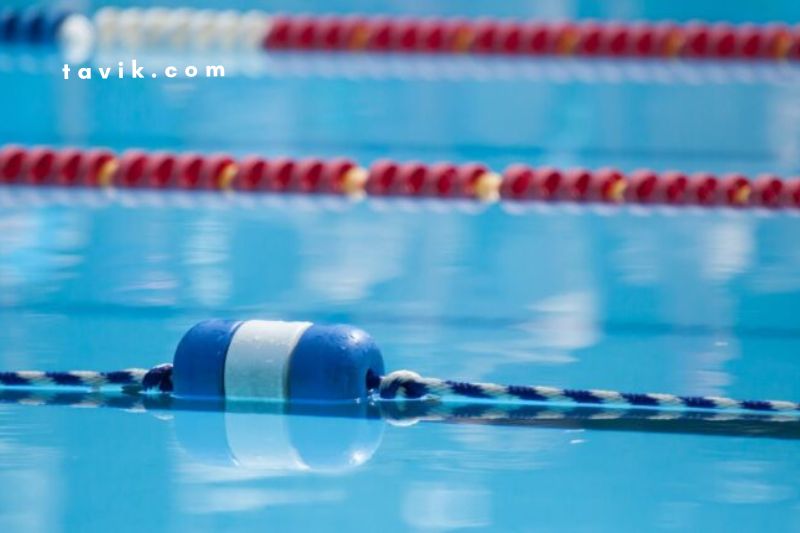
1. Swimming pools have chlorine
Because chlorine is a strong disinfectant, chlorine is often used in pools. High chlorine levels can lead to eye irritation, dry skin and headaches. Swimming goggles may help to prevent irritation from the eyes. However, your skin, hair and ears will still be exposed. Inhaling chlorine can also cause respiratory problems and increase the risk of developing asthma.
2. Common Injuries
Swimming has several disadvantages. Swimmers are more susceptible to specific injuries. Because of the repetitive movements involved in different strokes, this is a common problem. These are the most common injuries in swimming: Tendinitis and shoulder impingement, as well as injuries to the shoulders.
- Knee injuries
- Low back and neck injuries.
- Biceps tendinitis.
These can all be caused by a combination or a combination of several things, such as:
- Insufficient rest between swimming sessions.
- Bad stroke technique.
- Poor breathing technique
- Poor condition and strength in the core, hips and shoulders.
3. Unwanted Weight Gain
One of the lesser-known drawbacks to swimming is weight gain. Scientists discovered that colder water causes higher levels of hunger than warmer. Participants who were exposed to colder water ate up to 44% more calories. This was even though their caloric expenditure was relatively the same as those who swam in warmer waters. Another study concluded that swimmers have higher adipose levels (simply energy stored as fat) than bikers and runners.
4. There is a risk of drowning
Swimming can be scary if you are just starting to learn how to swim. For beginners, drowning will be their number one fear. Swimming in a pool is safer than swimming in open water. However, swimming in open waters like the oceans, lakes or rivers can be dangerous. The main dangers are the current lack of experience and unfamiliarity with how the currents interact with our bodies. Swimming in open water is dangerous because of the currents and the possibility of being pulled underwater. 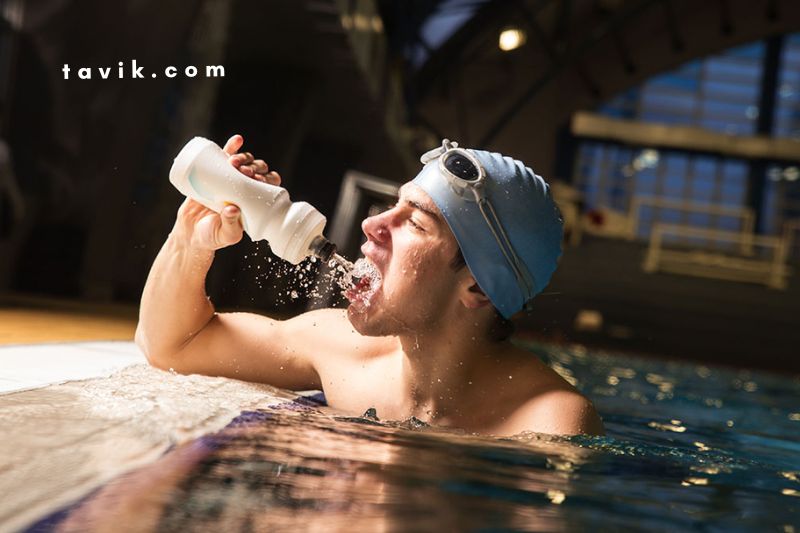
5. Dehydration
Swimming requires all of your major muscles to be active. This causes you to sweat and lose fluids like other intense exercises. It's challenging to feel and notice that you're actually sweating underwater. It may seem strange to most people, but it can happen. This can lead to a loss or imbalance of electrolytes. As you might know, the body's healthy functioning depends on proper electrolytes balance.
6. Fungal Infections
Another disadvantage to swimming is fungal infections. The athlete's foot is a common fungal infection that swimmers experience. It is highly contagious and can spread quickly. A yeast infection is another concern, particularly for women. This is usually caused by high humidity, heat, and swimming water.
7. Bacterial Infections
Water can contain many pathogens and bacteria. Some bacteria can survive even in well-chlorinated water bodies. The swimmer's ear is a common bacterial infection. This infection usually occurs when water remains in the ear canal for too long. This allows bacteria to grow and infect your ears.
8. Tiredness and Fatigue
Many people feel tired after swimming in the ocean, especially at night. This phenomenon can be explained in many ways. Sun exposure may be the reason people feel tired after swimming. One study showed that people who spend a lot of time outdoors and are exposed to the sun have lower cognitive functions. Another theory states that cold water causes us to burn more energy to maintain our core temperature. This makes us more tired than usual. It is also believed that many people swim before breakfast and go to work early. Swimming after a prolonged period of fasting may lead to fatigue.
9. Polluted water
 Swimming in polluted water is a significant disadvantage, especially for those who swim in rivers, lakes and oceans. You can continuously swim in water polluted by human and animal wastes, garbage, germs and other contaminants. Avoid swimming in polluted water near industrial plants, wastewater treatment plants or other points. You could get skin, eye, and stomach infections and open wounds.
Swimming in polluted water is a significant disadvantage, especially for those who swim in rivers, lakes and oceans. You can continuously swim in water polluted by human and animal wastes, garbage, germs and other contaminants. Avoid swimming in polluted water near industrial plants, wastewater treatment plants or other points. You could get skin, eye, and stomach infections and open wounds.
10. People pee in the pools
It is well-known that many people pee in the water. This can lead to health problems such as asthma and other respiratory issues. If chlorine levels drop below certain levels, disinfecting the water may not be sufficient.
11. Winter swimming
For many, swimming in winter is difficult. Particularly if you are swimming in rivers, oceans, or lakes. It can be dangerous to swim in cold water. It could lead to:
- Hypothermia.
- Sudden heart attack.
- The capacity to swim is reduced.
- Hyperventilation.
12. Saltwater
When we go to the ocean for the first time as children, the one thing that we are told is to not drink the water. Salt can be consumed with food in small quantities, but saltwater from the oceans and seas can cause health problems. Salt water is much more dangerous because it has a higher salt content. Saltwater intake can lead to other health problems, and excessive amounts can lead to death.
13. Cramps
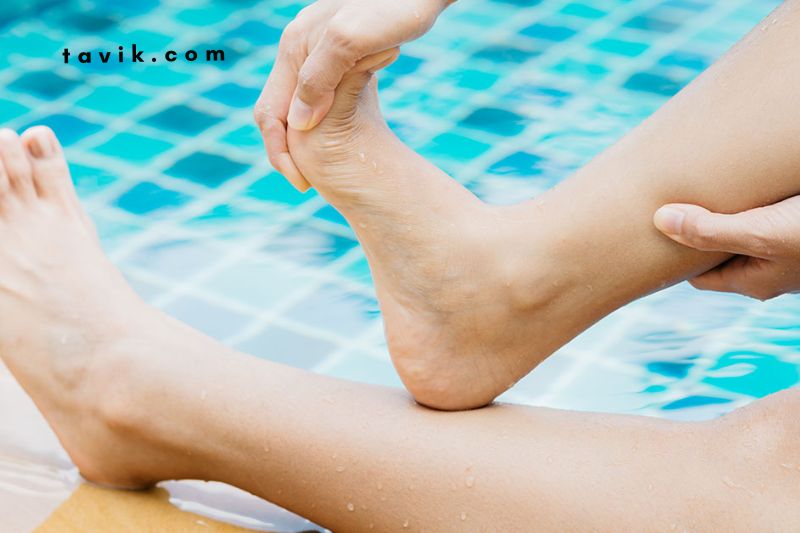 Swimming can also pose a risk for cramps. These cramps can occur for three reasons, depending on how often you swim, your lifestyle and how you swim. It is usually caused by:
Swimming can also pose a risk for cramps. These cramps can occur for three reasons, depending on how often you swim, your lifestyle and how you swim. It is usually caused by:
- Dehydration and loss of electrolytes
- Too much swimming.
- Inadequate conditioning
14. Bumping into Foreign Objects
It is possible to encounter different types of sea creatures and rocks while swimming in open water. Sharks, for instance, are a genuine danger to beachgoers. Other animals, such as jellyfish, crabs and sea urchins, can be dangerous. It is possible to step on or hit your legs against rocks, especially if you're swimming in shallow water. This can lead to some minor injuries, but it is possible to get some bruises or wounds.
15. Sun Exposure
The increased sun exposure when swimming is last but not least. You'll likely be in the sun more often if you swim in an outdoor pool or open water. The cooling effects of water will help mask the fact that your skin is exposed to the sun's relentless rays. This can cause severe sunburns, as well as skin cancer. This can cause severe skin problems, especially for those with ashen skin or prone to blistering quickly.
16. Swimming can be expensive.
Many sports and activities require a financial investment. A gym membership is necessary if you enjoy going to the gym. You'll need to purchase running shoes if you enjoy running. Swimming alone isn't expensive, but it can add up if your goal is to compete or improve your recreational swimmer skills. These essentials you will need to know if you wish to learn swimming.
- This fee is not mandatory for everyone.
- Swimming goggles.
- Swimsuit.
It shouldn't cost too much each year, and it's a significant investment considering all the benefits of swimming. It is also cheaper than other sports. However, if you want to improve your swimming, you must invest in other equipment. This can make it more costly. These can include:
- Membership in a swim club or coaching.
- You will need swimming gear, such as a fin, snorkel, paddles and a pool buoy.
The coaching will be the most costly part of any of the items mentioned above, regardless if you are swimming competitively or recreationally. The best thing about coaching is that you will most likely receive an excellent facility from practicing. However, competitive swimming can be very costly. You'll need to pay for the following items as a competitive swimmer: Tech suits and goggles for racing gear. These are usually quite costly.
- Register with your local/national swimming association.
- Swimming meet/ competition fees.
- Travel fees may apply for competitors in larger/further away events and meets.
- For strength training, there are additional fees to the gym.
These things can add up and make competitive swimming one of the most expensive traditional sports.
17. Competitive swimming can be very time-consuming.
Although exercise is essential to our lives, everyone should get at least 20 minutes of aerobic exercise each day. According to the Mayo Clinic, swimmers train for much longer than that. While this is not bad, it can limit your social interaction with friends or allow you to study for exams and tests if you're still at school. Non-professional competitive swimmers train for at least 9 hours per semaine, which isn't bad. But, that number could easily be pushed up to 20+ hours per week. This is where I find myself right now. This includes strength training and swimming. Professional swimmers will train for around 30-35 hours each week, spread over several daily training sessions. However, this is your job, and you're being paid to compete. You can also add extra time driving to the pool and foam rolling to loosen muscles and get ready for training. For the average swimmer, or someone just trying to keep fit and healthy, swimming laps isn't too expensive. Swimming laps can be a great way to get in aerobic exercise and strengthen all your major muscles. Intermediate and advanced swimmers can swim 20-30 laps per minute for beginners. All that being said, I must mention that swimming has taught me to be efficient and plan ahead. This skill is handy in today's society, where many distractions surround us. This will be especially beneficial for younger swimmers, as it will teach them how to focus their time on the most important tasks each day to accomplish their tasks.
Swim Season: 3 Ways Pool Chlorine Harms Swimmers' Health

1. Asthma and Allergies
A chlorinated pool can cause asthma and allergies in competitive swimmers. Competitors who start swimming in chlorinated pools early are more likely to develop asthma, allergies, or bronchiolitis. It is most likely caused by toxic compounds formed when chlorine reacts with organic materials such as lotions, cosmetics, and urine. These compounds are called disinfection Byproducts or Chloramines. They also cause a pool smell, the strong chlorine odor we associate indoor pools with. Breathing in disinfection byproducts can lead to allergies, asthma, or a condition called Lifeguard Lung, which causes persistent cough.
2. Eye and skin irritation
Swimming in chlorinated pools can cause dry, itchy skin and red eyes. This discomfort can also be caused by disinfection products. This could be due to your child or yourself coming home from swimming with reddened eyes or skin irritations.
3. Stomach Illness
Many people believe chlorine kills all germs immediately. However, many illness-causing contaminants are resistant. Cryptosporidium Parvum, a typical water disease that can cause severe gastrointestinal illness and spreads quickly, is often found in public swimming pools. Although these illnesses aren't caused by chlorine, it is dangerous to assume that chlorine will protect swimmers. Many public pools today have secondary sanitation systems to protect swimmers.
Know What's Best for Your Young Swimmer
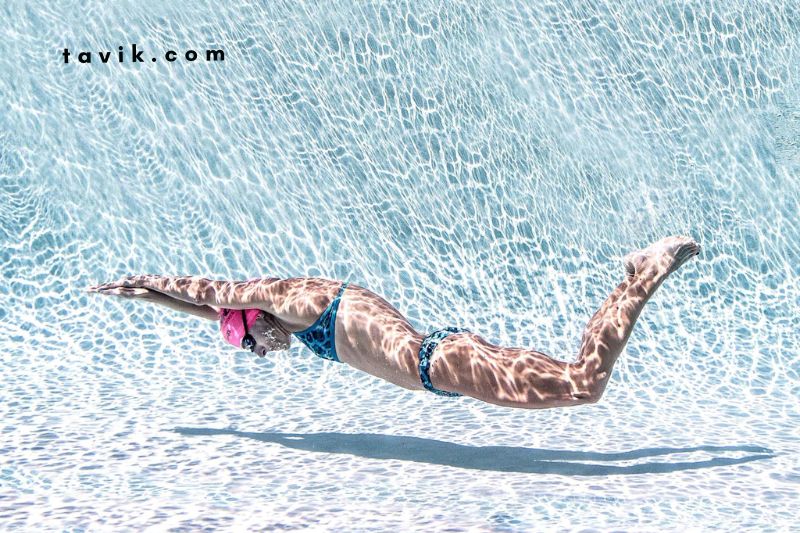
1. Rest
Overhead activities are prohibited for athletes who participate more than three months out of each year. Parents should encourage their children to try other sports, especially ones that do not involve overhead activities.
2. Warmup
Make sure your swimmer is adequately warmed up. Going into a swimming pool with your skin still cold is not a good idea. It is also essential to choose the right type of warmup. It is vital to ensure that warm-ups are not passive. To warm up their arms, swimmers use a variety of traditional stretches. Warm-ups that target the shoulder joints are essential to keep them stable. You must warm up and stretch the muscles, not just the shoulder joint.
3. Hydration
Make sure you drink lots of water. Swimming in a pool can dehydrate your body, especially with all the sweating and exercise.
4.Stop listing:
- Incorrect swimming form
- Training without rest days is excessive.
- Every stroke is the same.
5. What to watch:
- Green light - Good: Muscle soreness can be tolerated if it lasts for at least 2 days
- Red light - This is a bad sign if soreness persists for more than 2 days or becomes worse and/or sharp
(If the item is considered a red light, it should be reported to a physician.)
6. What's the deal?
- Young Kids Age: 5-9
The training should not last more than 60 minutes and should be done no more often than once a week. Learn the fundamental strokes.
- Older Kids Age: 10-16
Training should not last more than 120 minutes and should be done no more often than six times per week. Learn how to reduce wasted energy in a few strokes.
7. Proper warm up:
- Light swimming for 5 minutes
- Active stretching for 15 minutes
- Ten minutes of breathing and stroke exercises in the pool
Cook Children's SPORTS physical therapists have been trained to properly treat overuse injuries. They work to restore function and safely guide athletes back to their sports activities. Talk to your pediatrician if your child has suffered from injuries while swimming or if you have concerns about future injuries.
FAQs About Problems In Swimming
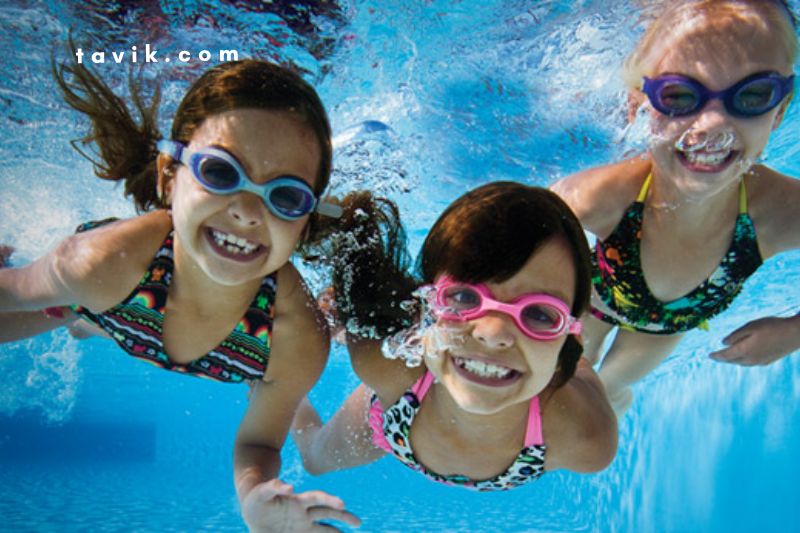
1. How do you test for safe chlorine levels in a pool?
You can do a smell test. Dr. Uren states that it is perfectly normal to smell chlorine when entering an indoor swimming pool area. Suppose the smell is strong and it causes irritation to your eyes or respiratory system. In that case, the chemicals in the pool are unbalanced. According to the CDC, healthy pools don't have strong chemical smells. Water Quality & Health Council recommends using a test strip for checking the pH and chlorine levels. According to the CDC, a healthy pH should be between 7.2 and 7.8. This allows for the prevention of side effects from chlorine while killing germs. The safe chlorine level in a pool should not exceed 1 part per million (ppm). How high is the acceptable chlorine level to swim? The acceptable level of chlorine for swimming depends on the person being asked. According to the Water Quality & Health Council, it is from 1 to 5 ppm. So, for example, 10ppm chlorine is unsafe to swim in.
2. How to avoid side effects from too much chlorine?
These tips help you avoid the unpleasant side effects of chlorine.
If the water is not safe, stay out of it
Don't swim in unmaintained pools.
Wash Your Face Before You Go Swimming
Signs at public pools ask you to wash off your clothes in the shower before entering the water. Do it! According to the CDC, you only need to rinse your body for one minute. Also, make sure to get your hair wet. Dr. Ovits states that soaking the hair in fresh water is a good idea since the shaft of the hair absorbs less chlorine water. Goggles and swim caps are good options to protect your hair.
Moisturize After Swimming
Dr. Ovits advises that you don't apply sunscreen to your skin before entering a pool. She says that after you've finished with the pool, it's the perfect time to apply a moisturizer. You should look for one that contains ceramides.
Conclusion
Swimming is a great way to stay in shape and have fun, but there are some disadvantages and risks associated with it. First, swimming in open water can be dangerous because of the possibility of getting lost or being pulled underwater by currents. Second, swimming in pools can also be risky because of the possibility of getting sick from the chlorine or other chemicals in the water. Finally, even though swimming is a great workout, it is important to remember that it is still possible to overdo it and injure yourself. Thank you for reading! Follow Tavik for more useful articles.
